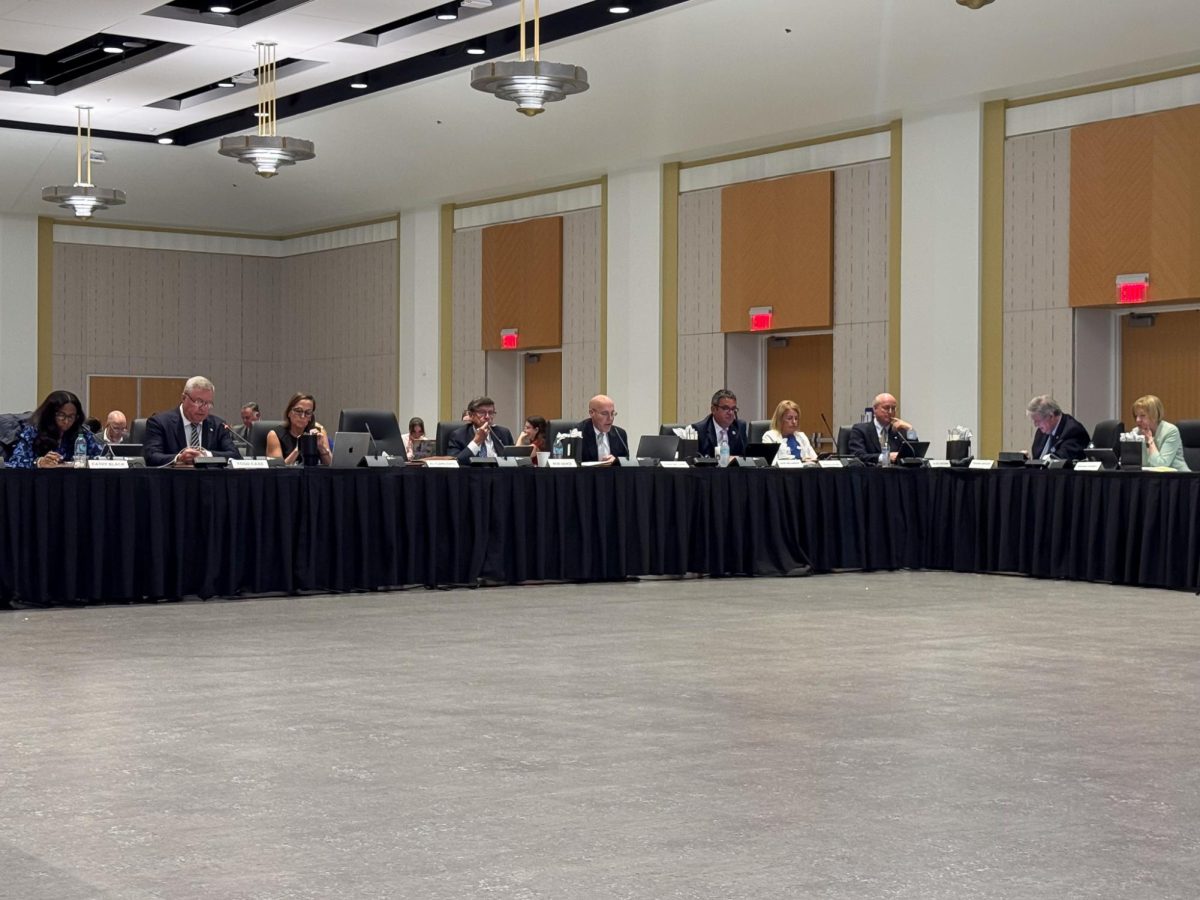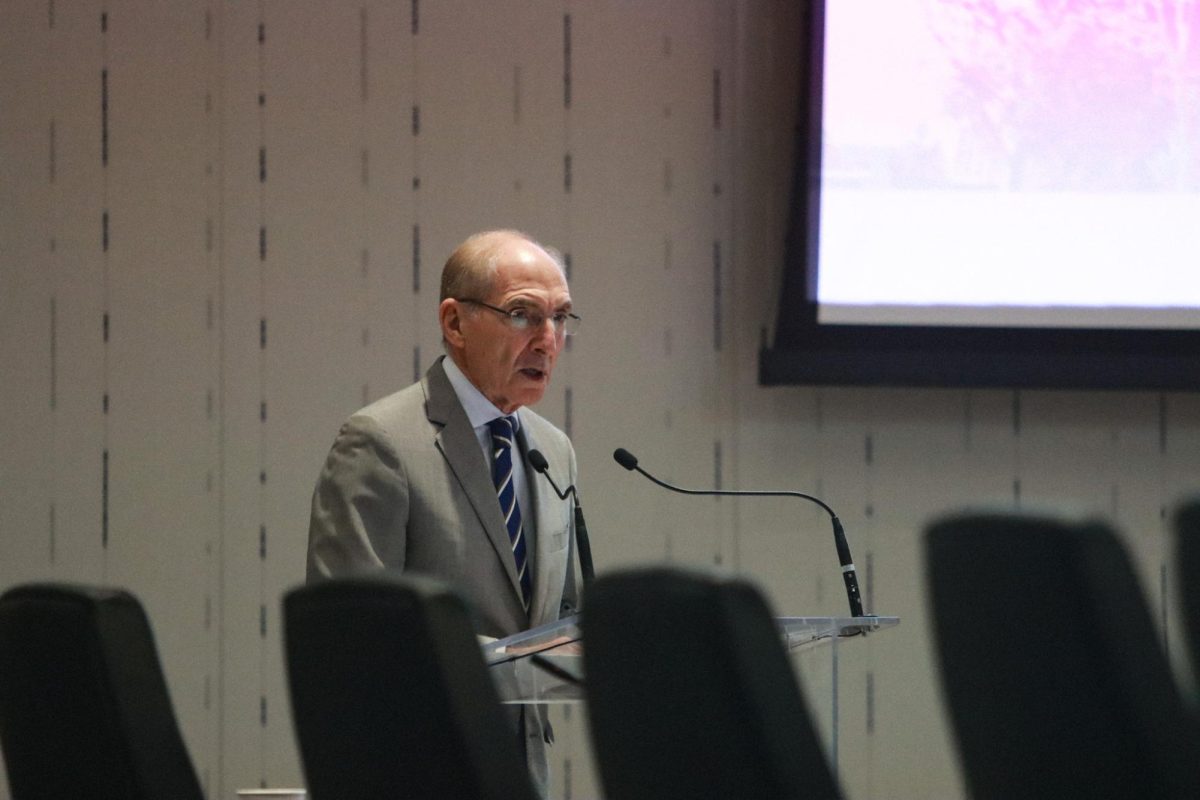Pediatric vaccination clinic opens at UK HealthCare
A dose of the Pfizer COVID-19 vaccine is injected into a patient’s arm on Saturday, April 10, 2021, at UK’s COVID-19 vaccination clinic at Kroger Field in Lexington, Kentucky. Photo by Jack Weaver | Staff
December 2, 2021
On Nov. 9, UK HealthCare and the Kentucky Children’s Hospital collaborated to open a pediatric vaccination clinic and distribute COVID-19 vaccines to children.
The clinic, located in the UK HealthCare outpatient facility at 245 Fountain Court, aims to give children a positive immunization experience.
“Lots of these children that we’re seeing are not children that have massive amounts of medical interventions,” Dr. Jennifer Guilliams, the Child and Family Life Coordinator at Kentucky Children’s Hospital, said. “We wanted this experience to be something where we could build upon positive coping so that children would feel successful [and] have a good experience to build upon.”
On Oct. 26, the FDA authorized the Pfizer COVID-19 vaccine to be administered for emergency use in children ages five to 11. The CDC authorized vaccination distribution to this age group on Nov. 2.
“We got word that the FDA was going to approve this vaccination, so we kind of wanted to mirror the way that we did it at Kroger Field,” Madison Owens, an administrative fellow for UK HealthCare, said. “We really worked well with our pharmacy team, the ones who had set everything up at Kroger Field.”
Owens worked with Dr. Lindsay Ragsdale, the interim chief medical officer at the Kentucky Children’s Hospital, to open the clinic.
“There’s so many different details that we needed to make sure we were all thinking of. You’ve got to have computers … syringes and needles and people, all of these moving parts,” Ragsdale said. “A whole group of us in information technology, pharmacy, Child Life [and] pediatrics [got] together … to make sure that we have all of the details squared away. It has been an awesome team to work with.”
Owens said that designing the pediatric clinic was “a completely different ball game” compared to designing a clinic for adults.
“These are small kids who really see vaccination as a stressful time,” Owens said. “How can we make this easier on them? How can we make it easier on the parents? What can be the fun part about it?”
Ragsdale agreed and said one of her main priorities was making the child the center of the immunization process.
“So often, we in medicine, we’re kind of like, ‘This is what a patient needs;’ we’re just going to give it to them without thinking about what the patient goes through,” she said. “[Children] have been through a lot in two years. Their whole lives have really been upended, their schooling, their social connections. Some of them have lost loved ones to COVID-19. We wanted to make sure that that child was engaged in the process instead of just [sitting] down and [getting] a shot.”
To make the pediatric patients more comfortable, clinic volunteers give them “treasure maps” when they enter the clinic. This allows children to move through the clinic and receive their immunizations at their own pace.
“They have different stops on the map, and they get to pick out a set of stickers that they like and put a sticker on each stop they go to, and then at the end they get a prize,” Owens said. “We can … really let them lead it, and also just make sure that it’s their own story.”
Ragsdale, who occasionally mans a volunteer booth at the clinic, has seen the effect these treasure maps have on the attitudes of both children and parents.
“Sometimes … I can see [a child] in the hallway and … they have that nervous look on their face. They don’t want to come in because they’re nervous about the shot, and then the first thing that they get is this treasure map. ‘Hey, come do a treasure hunt with us! We’re gonna have prizes and pick some stickers out and it’s going to be so fun,’” Ragsdale said. “All their nervousness drains away, and the parents are so excited: ‘Hey, this is going to be fine.’”
In addition to giving children autonomy over the vaccination process, the clinic also trains its staff on how to interact with children to create a safe and comfortable environment.
“We’ve been able to … have a team of Child Life Specialists out there, one per day, that’s actually helping the volunteers to understand some of the ways to interact with the child that makes them a little less fearful,” Guilliams said. “Whenever a new set of volunteers and pharmacists come on, we do a small training with them … about specific language that you want to use with the children and specific ways to encourage them.”
Guilliams said that staff utilize the “one voice” technique, where one person talks to a child at a time to avoid overwhelming the child. The clinic utilizes pain management techniques such as Pain Ease anesthetic sprays and vibrating devices that numb injection sites. Parents are also informed on ways to hold and comfort their child while the child is being vaccinated.
“The parents that come in, they are aware that we have Child Life specialists, and that’s part of why they’re there,” Owens said.
Another point of discussion among patients and parents is the clinic’s sensory room.
“When we were planning this, [we made] sure that we had a space that was somewhat safe for those children that are a little neurodiverse or have some sort of a diagnosis that would create more stress for them being in the active environment that this clinic is in,” Guilliams said. “We were able to create a room that can actually have a door closed, lights, music [and] some sensory-friendly equipment to help children who would need some regulation from a sensory perspective to remain calm … or feel a little bit more at ease in this environment.”
The clinic will be open through the end of January. Normally, the clinic is open from 1 to 7 p.m. Monday through Friday, as well as from 9 a.m. to 5 p.m. on Saturdays. The amount of vaccination slots vary based on the availability of volunteers, but currently, the clinic is distributing a minimum of 130 vaccine doses each day.
“It’s great that we’re able to start with that minimum every day and look at the numbers and open more and more [slots] each day,” Owens said. “As of yesterday [Nov. 28], we have reached well over 1,000 [doses distributed].”
The clinic is also seeing children come back to receive their second dose, which Owens described as “really exciting.”
“They’re coming back, and they’re coming back to a place that they are comfortable with,” Owens said. “I just think it’s great that the parents are wanting them to bring them back and didn’t have a terrible experience.”
Guilliams has also seen the positive effects of the clinic within her own family.
“My daughter, who was extremely fearful of vaccinations from just going to the regular doctor, went out to the clinic and got her shot, and she rocked it,” Guilliams said. “[She] has told all the other kids that they need to come to this clinic, that it was easy … and she’s excited to come back on Friday and get her next shot.”
Ragsdale said her ultimate goal with the clinic is to strengthen prevention and create an environment in which “kids can be kids.”
“It’s been really fun to talk to kids … they’re like, ‘I get to see grandma at Christmas! I’m so excited; I can finally see her and give her a hug!’” Ragsdale said. “I think that this is somewhat hope for kids to get back to their regular lives. Maybe they can see the loved one they haven’t been able to see. Maybe they can stop wearing a mask if it’s safe. Those are all really amazing things in kids’ lives.”
Parents and guardians can register children for vaccines by visiting www.ukvaccine.org.






























































































































































